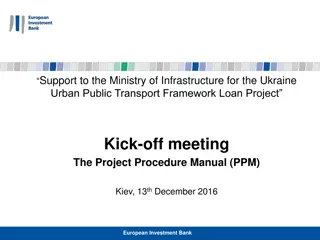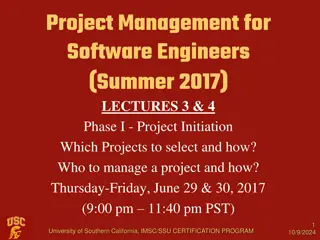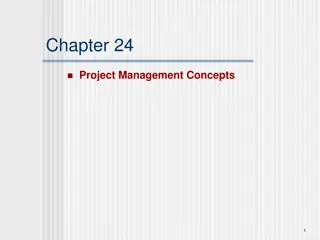Project-Based Learning Essentials
key elements of project-based learning (PBL), including its focus on real-world problems, skill-based approach, important elements, and structured inquiry process. PBL encourages collaboration, critical thinking, and communication skills through hands-on projects, promoting student engagement and motivation.
Download Presentation

Please find below an Image/Link to download the presentation.
The content on the website is provided AS IS for your information and personal use only. It may not be sold, licensed, or shared on other websites without obtaining consent from the author.If you encounter any issues during the download, it is possible that the publisher has removed the file from their server.
You are allowed to download the files provided on this website for personal or commercial use, subject to the condition that they are used lawfully. All files are the property of their respective owners.
The content on the website is provided AS IS for your information and personal use only. It may not be sold, licensed, or shared on other websites without obtaining consent from the author.
E N D
Presentation Transcript
Dr. Rob Danin English Language Specialist www.robdanin.com
What is Project-Based Learning? PBL focuses on real-world problems (authentic) and encourages students to explore issues outside the classroom Learning by doing educational process Encourages student motivation and collaboration Students show pride in a project they have designed themselves and shared with others Supports ELLs to discover new vocabulary, actively engage others in non-rehearsed dialogue, and generally improve cognitive skills plan, organize, summarize, ask questions, interpret results
PBL is Skill-Based To learn collaboration To learn critical thinking To learn oral communication To learn written communication work in teams take on complex problems present ideas reflectivewriting
Important Elements of PBL Standards Based Assessment Student Centered Collaboration Real World Connection Extended Time Frame Multimedia
Therefore, Project Based Learning is A systematic teaching method
Therefore, Project Based Learning is thatengageslearners in acquiring knowledge and skills
Therefore, Project Based Learning is extended inquiry process
Therefore, Project Based Learning is structured around complex, relevant questions
Therefore, Project Based Learning is structured around carefully designed products
Therefore, Project Based Learning is and authentic tasks.
Therefore, Project Based Learning is A systematic teaching method that engageslearners in acquiring knowledge and skills through an extended inquiry process structured around complex, relevant questions, carefully designed products, and authentic tasks. From Introduction to Project Based Learning Handbook, Buck Institute for Education.
PBL is NOT New JOHN DEWEY SOCRATES LEV VYGOTSKY JEAN PIAGET BENJAMINBLOOM
Not to Be Confused With Problem-Based Learning Product emphasis Project-Based Process emphasis Problem- Based
PBL Considerations It s different! It s hard! Student driven Developing a good problem Teacher giving up control It s time-consuming! Planning It s wonderful! Implementing High engagement/motivation Self-directed learning Stretch learning abilities
Questions to be Answered by PBL Inquiry Approach to Instruction Teacher and students brainstorm activities that support inquiry: What s going on? Why is this happening? What does this mean? What will happen in the future?
Examples of PBL interviews: either translated or in English a PowerPoint presentation a play a script a simulation a cartoon an adaptation of a previous project a video an original idea
How Does Research Support PBL? Increases student motivation and engagement in learning Is more effective than traditional instruction in increasing academic achievement Improves student retention of knowledge over time Is especially effective with lower-achieving students Improves mastery of 21st century skills
The Difference: PBL and Traditional Projects
The Teachers Role Serve as facilitator Model thinking and problem-solving strategies effectively Structure meaningful tasks Work with students to frame worthwhile questions Manage the structure of multiple day-to-day activities to produce high quality outcomes Teach students to set goals
PBL Questions to be Considered Has the teacher adequately prepared the students (e.g., foundational skills)? Does the teacher solicit student input? Do the teacher and student negotiate learning outcomes? Who selects the topic? Who defines the products and activities? Who controls the timeline and pace of the project?
The Students Role Set goals Begin with the end in mind Explore and ask questions In order to answer Essential Questions Work well with peers Stay accountable to self, peers, and teacher for project outcomes
Developing Essential Questions Essential Questions are stimulating. open-ended. aligned to the project topic. challenging. Essential Questions should relate to real-world (authentic) situations that students find interesting.
Students Develop Needed Skills Information Searching & Researching Critical Analysis Summarizing and Synthesizing Inquiry, Questioning and Exploratory Investigations Design and Problem-solving
Student Planning Phase Identify a topic Work on project Ask questions that clarify topic Respond to questions raised
EFL Project Examples Are Cell Phones Dangerous? (Introduction to Non-Fiction) (intermediate high) The student designed a survey, conducted interviews among friends and strangers, examined research on the topic, and prepared a 12-page paper. In the paper, the student compared available data from cell phone use and research in the United States and Russia; she also summarized the results of the survey she conducted and showed video on the topic. Mind Playground: A Mad Podcast (Introduction to Fiction) (intermediate high) The student designed a series of interviews and profiles using different electronic voices based on characters from the novels and short stories read during the course. One of the questions asked by the student was, how can technology be integrated into the study of fiction and English for nonnative speakers? The USA and the USSR: The Truth in the Arts and Cinema of the Sixties (The Sixties: a Decade of Change) (advanced level) The student doing this project asked questions about U.S. and Soviet relations at a dark period in their history. The project contained original video footage from the two countries, a survey of people who lived during the time as well as some humorous anecdotes and movie footage connected to the topic.
How are PBL Units Designed? PBLPlanning Template
PBL Assessment One way of creating proficiency levels for PBL is to use Bloom s Taxonomy, which consists of six levels, from lowest to highest: knowledge, comprehension, application, analysis, synthesis, and evaluation. The lower level involves rote memorization. At this level, students might develop a poster or PowerPoint presentation with facts. At the higher levels, students are encouraged to produce more complicated projects (i.e., community-based). This can promote differentiation of instruction based on students abilities and needs.
Project Evaluative Measures Does the project Meet standards? Engage students? Focus on essential understanding? Encourage higher-level thinking? Teach literacy and reinforce basic skills? Allow all students to succeed? Use clear, precise assessments? Require the sensible use of technology? Address authentic issues?
Project Evaluation (Self and Peer Assessment) Take time to reflect individually and as a group Share feelings and experiences Discuss what worked well Discuss what needs to be changed/revised Share ideas that will lead to new inquiries and projects
Reflective Evaluation What did I/we learn? Did I/we collaborate effectively? What skills did I/we learn? What skills do I/we need to practice? What was the quality of my/our work? Where can I/we improve?
PBL In Action (3:50) http://www.youtube.com/watch?feature=player_embedded&v =LMCZvGesRz8
PBL: Think/Pair/Share What ideas do you have for a project? What question will you ask your students? Write down possible questions that will launch a project-based learning activity. Choose one of your questions. Brainstorm with your colleague sitting next to you. Take notes (concept map). What subjects can be woven into this PBL activity?
Project-Based Learning Resources http://www.bie.org/ http://pbl-online.org/ (BIE sponsored) https://www.edutopia.org/article/planning- pbl-implementation http://21centuryedtech.wordpress.com/2010/ 01/16/free-project-based-learning-resources- that-will-place-students-at-the-center-of- learning/ http://www.lullah.com/pblwebquest/ (PBL teacher training WebQuest)
Lets Begin PBL! Think BIG! What is the Question? The Question is the Answer! www.robdanin.com



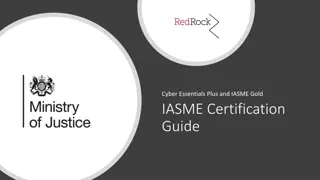


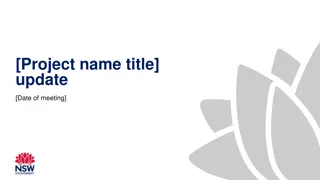


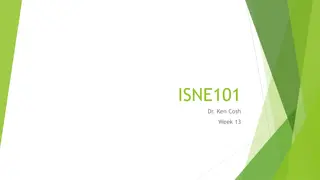
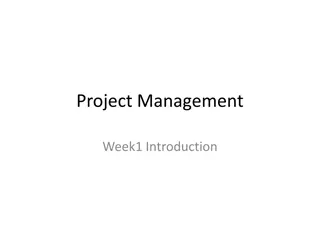

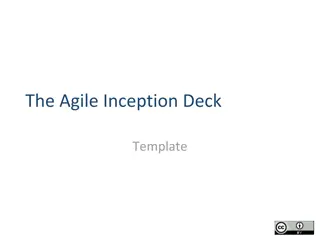
![Project Initiation Document for [Insert.Project.name] [Insert.Project.number]](/thumb/226757/project-initiation-document-for-insert-project-name-insert-project-number.jpg)

